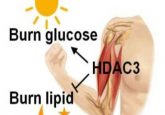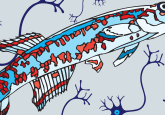The benefits of exercise on a molecular level

A protein that plays a key role in mediating the health benefits of exercise has been discovered.
A joint research team, led by Yong Ryoul Yang of the Aging Convergence Research Group at the Korea Research Institute of Bioscience and Biotechnology (KRIBB; Daejeon, South Korea) and Nak-Sung Kim of Chonnam National University (Gwangju, South Korea), has discovered a protein, CLCF1 (cardiotrophin-like cytokine factor 1), that plays a central role in mediating the health benefits of physical activity.
The team found that CLCF1 is secreted by muscles during exercise, where it helps strengthen both muscles and bones, thereby suppressing musculoskeletal aging.
 The blueprint of a cell: how cells organize organelle growth
The blueprint of a cell: how cells organize organelle growth
Hyperspectral imaging has provided an insight into how cells organize and prioritize organelle growth.
To understand how CLCF1 changes in response to exercise and aging, the researchers divided participants into young and elderly groups and monitored changes in blood CLCF1 levels after exercise. Interestingly, CLCF1 levels increased markedly after a single exercise session in the younger group, whereas in older adults, the protein only increased after over 12 weeks of continuous exercise.
The team also conducted experiments on aged mice. When CLCF1 was administered to elderly mice, they showed improved muscle strength and increased bone density. In contrast, blocking the action of CLCF1 made exercise ineffective, confirming that this protein is essential for the beneficial effects of exercise.
Further analysis showed that CLCF1 enhances mitochondrial function in muscle cells, inhibits the formation of bone-resorbing osteoclasts and promotes the differentiation of bone-forming osteoblasts. This is the first scientific evidence identifying changes in protein secretion as a major reason for the reduced efficacy of exercise in aging individuals.
Yang concluded, “This research provides a biological basis for why exercise becomes less effective with age, and it lays the groundwork for developing new therapeutic strategies for healthy aging. In particular, the findings offer new directions for treating age-related sarcopenia and osteoporosis.”
This article has been republished from the following materials. Material may have been edited for length and house style. For further information, please contact the cited source. Our press release publishing policy can be accessed here.





